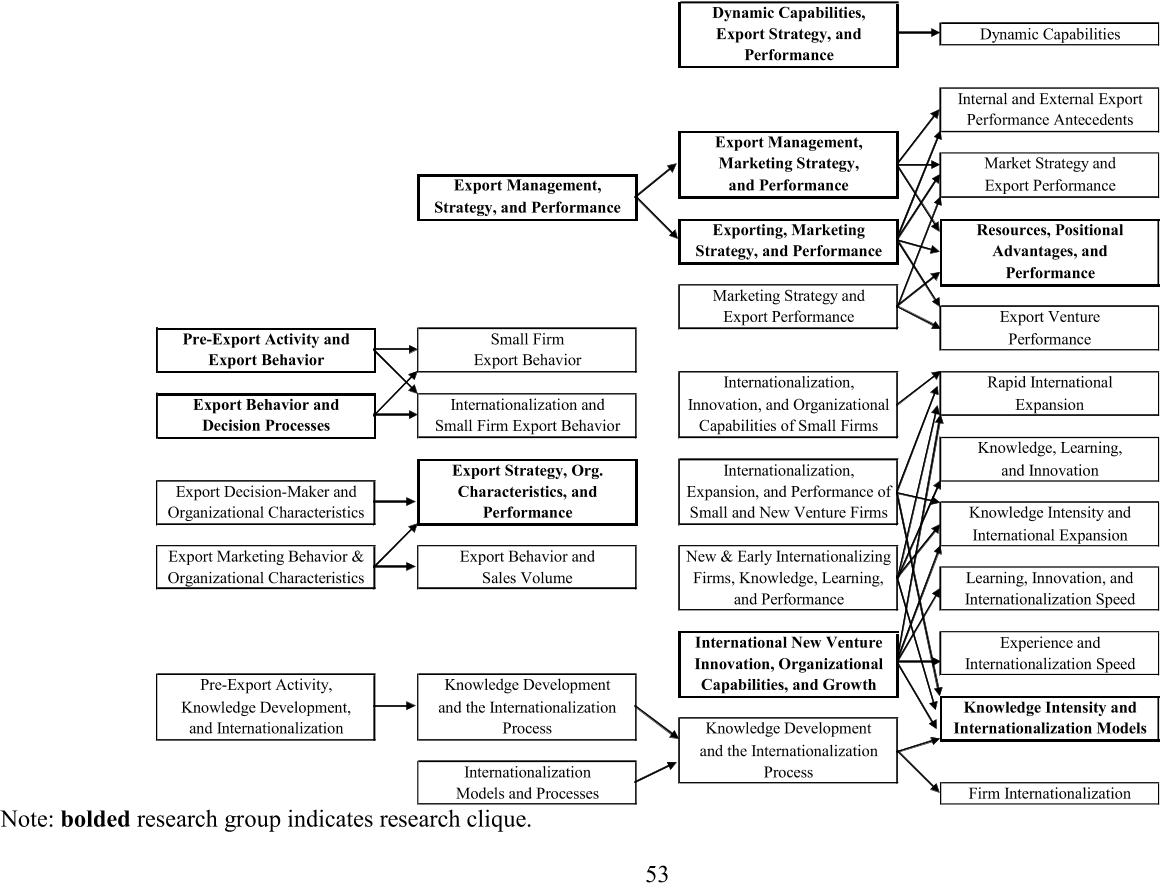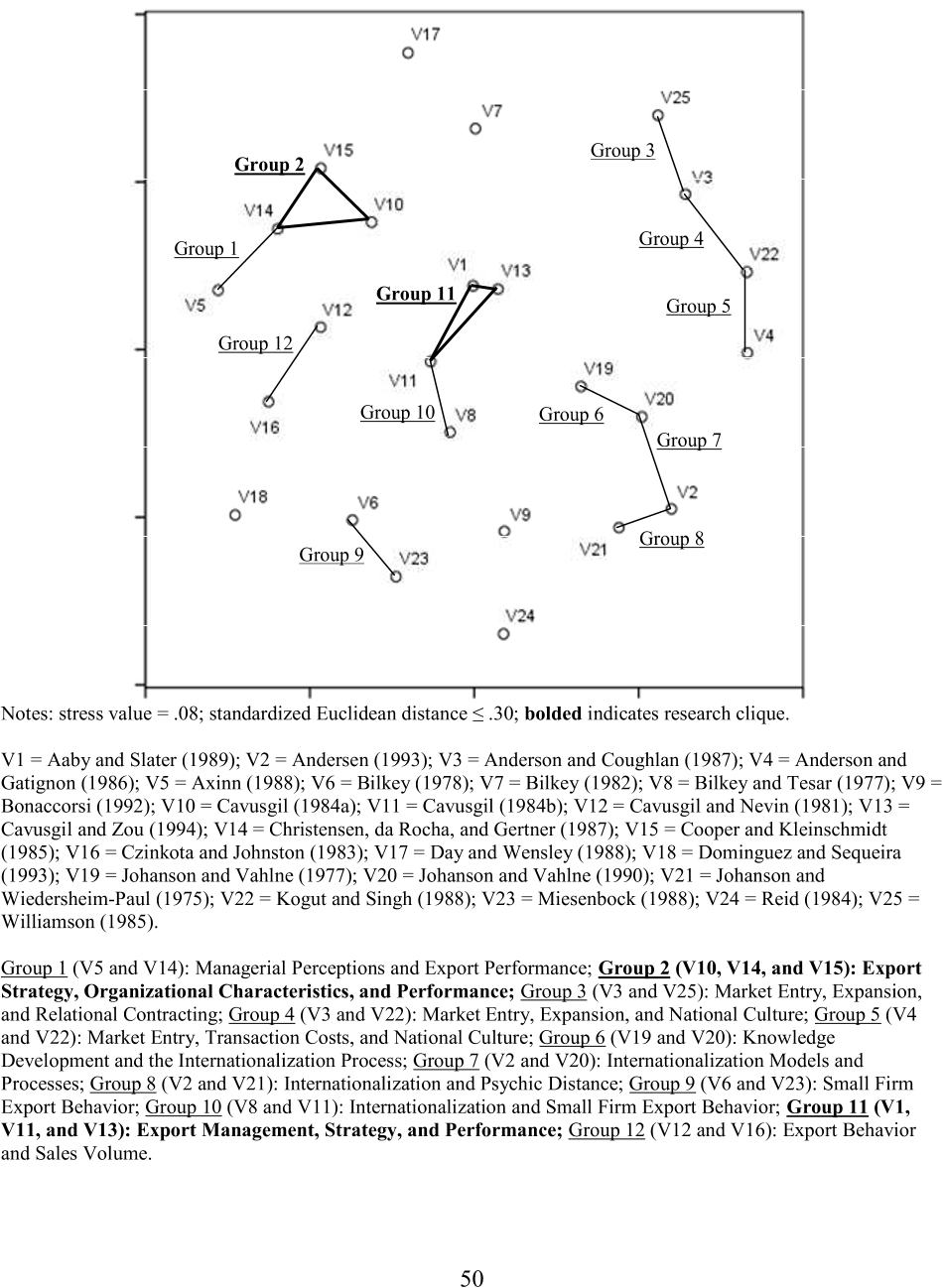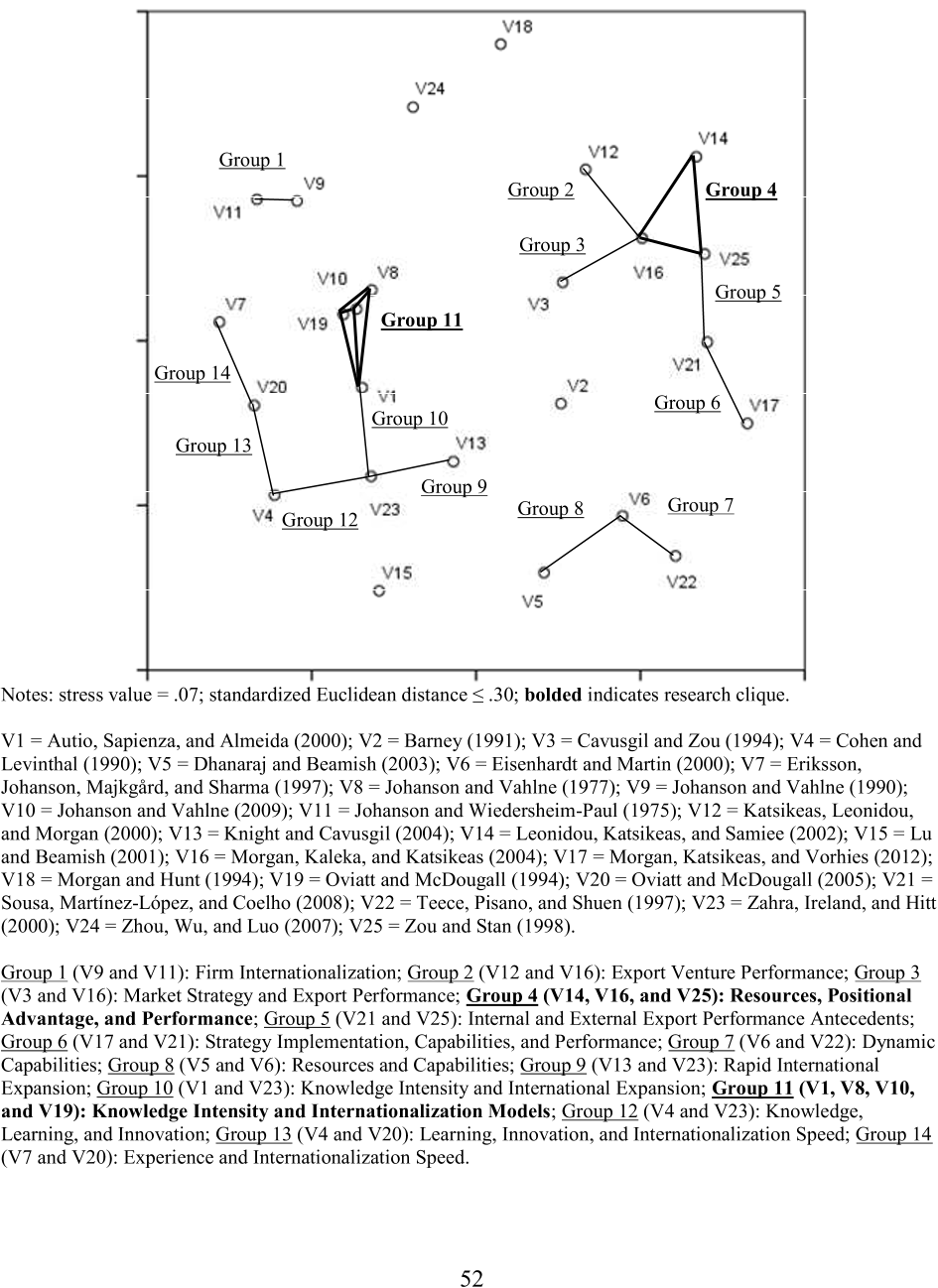




Did you find this useful? Give us your feedback











2,134 citations
142 citations
76 citations
75 citations
63 citations
37,560 citations
36,808 citations
34,393 citations
32,981 citations
31,623 citations
Future research should try to identify actions that can be taken by firms to move between different relationship stages as a result of economic change. Future researchers may consider a counter approach and test under which conditions psychic distance promotes learning, thus leading to more successful future market entries. Using institutional theory as a lens, future researchers may examine legitimacy issues within cognitive and regulatory contexts. Thus, future studies could explore how institutional gaps impact country image and attractiveness as well as how these gaps impact the development and success of export exchanges.
Normative forces help to routinize actions and behavior, allowing firms to stabilize (Emery and Trist 1965; Meyer and Rowan 1977; Terreberry 1968).
Managing relationships between exchange partners is a necessary and sufficient condition for marketing practice as marketing actions cannot take place without the exchange of value between trading parties (Alderson 1965).
other dimensions such as reciprocity and cooperation have been included as contributing factors to the overall quality of partner relationships (Palmatier et al. 2006).
A fifth direction that could benefit the exporting literature relates to an integration ofinternationalization inexperience cost and export marketing strategy (Eriksson et al.
The fourth topic that has not been studied much relates to the combination of researchrelated to dynamic capabilities and social networks in emerging market export contexts (Teece, Pisano, and Shuen 1997; Zhou, Wu, and Luo 2007).
As resources can be categorized as organizational, entrepreneurial, and technological in nature, there are many human and technical factors which managers must consider when coordinating export strategy (Dhanaraj and Beamish 2003; Gashi, Hashi, and Pugh 2014).
More directly, there are three general issues which have become prominent in recent exporting research: (1) information, knowledge, and learning; (2) resource configuration, market-oriented35organizational culture, and strategy; and (3) networking and inter-organizational relationships.
The first opportunity for advancing the exporting literature comes from a scarcity ofstudies emphasizing the differences of capabilities, implementation, and performance in the internationalization process stages (Johanson and Wiedersheim-Paul 1975; Morgan, Katsikeas, and Vorhies 2012).
Based on innovation s disruptive nature, the rate of innovation acceptance in export markets will likely differ due to customers need to perceive value in new or modified offerings (Silva, Styles, and Lages 2017).
This was done using theoccurrence of publications appearing in research groups in subsequent time periods and provided the basis for an analysis of the domain's development across the study's four periods (Samiee, Chabowski, and Hult 2015).